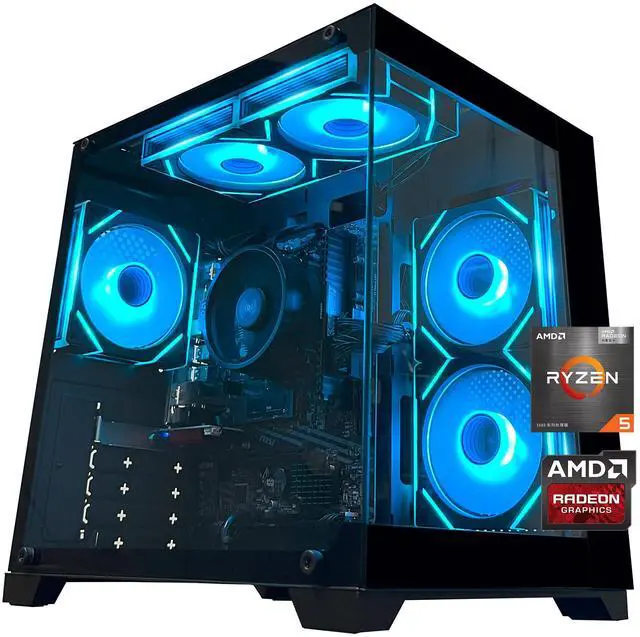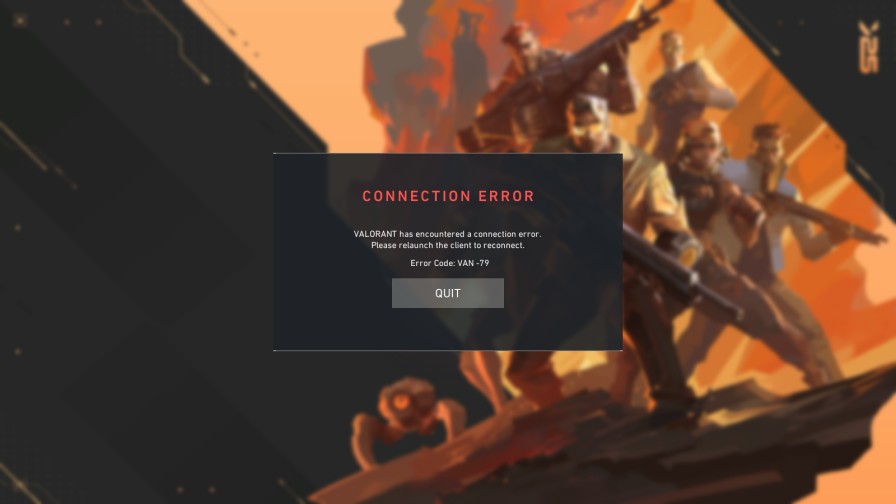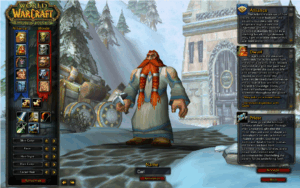The Silent Collapse: Understanding the Fragility of Our Online Gaming World
It’s a scenario familiar to every modern gamer. You’re in the final circle of a tense Battle Royale match, about to coordinate a final push in a high-stakes MOBA, or simply logging in to check your daily quests in a sprawling MMORPG. Suddenly, you’re hit with a connection error. A quick restart yields nothing. Your friends confirm they’re having the same issue. A glance at social media reveals a firestorm of reports: it’s not just your game. Dozens of major titles, from blockbuster AAA Games like Fortnite and Call of Duty to beloved mainstays like Roblox and Dead by Daylight, are simultaneously offline. This isn’t a targeted attack or a failure by a single game developer; it’s a symptom of a much larger, more fundamental issue—a cascading failure deep within the internet’s core infrastructure. This article delves into the technical anatomy of these widespread gaming outages, exploring the unseen backbone that powers our digital playgrounds and why, sometimes, it all comes crashing down.
This isn’t just a topic for network engineers; it’s essential Gaming News for anyone invested in PC Gaming, Console Gaming, or Mobile Gaming. Understanding the ‘why’ behind these blackouts provides crucial context, helps manage frustration, and offers a fascinating glimpse into the complex, interconnected web that makes modern online Video Games possible. We’ll break down the core components, analyze how they fail, and discuss the implications for the entire Gaming Industry, from developers to the global Gaming Community.
The Unseen Infrastructure: The Four Pillars of Online Gaming
When you connect to an online game, you are not simply creating a direct link to the game developer’s office. You are tapping into a vast, distributed ecosystem of technologies that work in concert to deliver a seamless experience. A failure in any one of these pillars can trigger the kind of widespread outage that dominates Gaming News feeds. Understanding these components is the first step to understanding the problem.
1. Game Servers and Data Centers
At the most basic level are the game servers themselves—powerful computers running the game logic, tracking player positions, and processing actions. These are no longer stored in a back room at a studio. Today, they are housed in massive, geographically distributed data centers. Most major publishers and even large Indie Games developers don’t own these data centers. Instead, they lease capacity from cloud service providers (CSPs) like Amazon Web Services (AWS), Microsoft Azure, and Google Cloud. This allows them to scale their infrastructure up or down based on player demand. However, it also means that if a major AWS region (like us-east-1) experiences a significant problem, it can take hundreds of games and services down with it, creating major headlines for PlayStation News, Xbox News, and Steam News alike.
2. Content Delivery Networks (CDNs)
Game clients, patches, and updates can be massive, often exceeding 100GB. Distributing these files to millions of players simultaneously would crush any single server. This is where Content Delivery Networks come in. CDNs are a global network of proxy servers that cache content—like game updates, images, and login assets—closer to the end-user. When you download the latest Valorant patch, you’re likely pulling it from a CDN server in a city near you, not from Riot Games’ central server. Major CDN providers like Cloudflare, Akamai, and Fastly are the circulatory system of the internet. A failure at a major CDN can prevent players from logging in, downloading patches, or even accessing game websites, effectively shutting down service even if the game servers themselves are running perfectly.
3. Domain Name System (DNS)
DNS is the internet’s phonebook. It translates human-readable domain names (like `epicgames.com`) into machine-readable IP addresses (like `192.0.2.1`). Every time your game client needs to connect to an authentication server, a matchmaking service, or a voice chat server, it performs a DNS lookup. If the DNS provider used by a game company suffers an outage or a DDoS attack, their game’s services become unreachable. Players’ clients literally won’t know where to send the data, resulting in connection errors. This is a subtle but catastrophic point of failure that can affect everything from FPS Games to complex Strategy Games.

4. Backbone Internet Service Providers (ISPs)
Finally, there is the physical and logical infrastructure that connects everything: the backbone ISPs. These are the Tier 1 networks that route traffic between different regions and continents. Sometimes, an error in routing protocols, like a Border Gateway Protocol (BGP) misconfiguration, can cause a “route leak,” where traffic is sent to the wrong place or dropped entirely. This is like a major highway interchange being suddenly closed, causing massive digital traffic jams that can isolate entire regions from specific gaming services, a major concern for the world of Competitive Gaming and Esports News where low latency is paramount.
Anatomy of a Cascading Failure: A Real-World Scenario
To understand how these pillars crumble, let’s walk through a hypothetical but common scenario based on real-world outages that have impacted the Gaming Industry. Imagine a major CDN provider accidentally pushes a faulty software update to its global network of servers.
The Initial Event and Immediate Impact
The update contains a bug that causes a critical process on the CDN’s edge servers to crash. Instantly, servers in key internet hubs like London, New York, and Tokyo go offline. The immediate effect is that assets hosted on this CDN become unavailable. For a game like Apex Legends, this might mean the login screen fails to load because it can’t pull the background image and authentication scripts from the CDN. For the Epic Games Store, it could mean the storefront itself is just a blank page. The game servers might be fully operational, but from the player’s perspective, the game is completely down. This immediately triggers a flood of reports and becomes a top story in Gaming News.
The Ripple Effect: Beyond a Single Service
The problem now begins to cascade. Many modern games are not monolithic applications; they are a collection of microservices. The authentication service might be hosted by one provider, the matchmaking by another, and the voice chat by a third. Many of these auxiliary services also rely on the same failing CDN for their own functionality.
- Authentication Failure: The login service, which itself is a web application, can no longer serve its JavaScript files, making it impossible for players to be authenticated.
- Matchmaking Meltdown: The matchmaking API, which connects players for games like League of Legends or Dota 2, becomes unreachable.
- Social and Storefront Collapse: In-game stores, friend lists, and community features that pull data from web-based APIs also go dark.
This ripple effect explains why an outage often feels so total. It’s not one system failing; it’s one foundational failure causing dozens of dependent systems to fail in sequence. Even Game Streaming platforms like Twitch can be affected, as their own web infrastructure often relies on the same major CDNs, leading to widespread Twitch News about streamers being unable to go live.
Implications and Insights: For Developers and the Community
These large-scale outages offer critical lessons for everyone involved in the world of Video Games, from the engineers working with Unreal Engine or Unity to the players trying to enjoy their favorite titles.
The Developer’s Dilemma: Redundancy vs. Complexity
For those in Game Development and Game Design, the key takeaway is the critical need for resilience. The primary best practice is to avoid single points of failure.
- Multi-CDN and Multi-Cloud Strategy: The most robust solution is to use multiple providers. A game could be architected to dynamically switch from a failing CDN to a healthy one. Similarly, critical backend services can be deployed across multiple cloud providers (e.g., AWS and Azure). However, this adds significant cost, complexity, and engineering overhead.
- Graceful Degradation: Instead of a total failure, systems can be designed to degrade gracefully. If the in-game store is down, the core gameplay should still function. If voice chat fails, the game should remain playable. This requires careful architectural planning during the Game Development cycle.
- Proactive Monitoring: Developers need sophisticated monitoring to detect infrastructure problems before they result in a full-blown outage. This allows them to reroute traffic or disable non-essential features proactively.
The challenge is balancing the cost of this redundancy against the risk of an outage. For a massive title like Minecraft, this investment is non-negotiable. For smaller Indie Games, the cost can be prohibitive, making them more vulnerable to these platform-level events.

The Player’s Plight: Patience and Information
For the Gaming Community, these events are frustrating, but understanding the technical reality can help.
- It’s (Usually) Not the Game Dev’s Fault: While it’s easy to blame the developer, the root cause is often far outside their direct control.
- Check Official Sources: The best course of action is to check the game’s official social media channels and status pages. Developers are often the first to communicate that they are aware of and investigating a wider internet issue.
- Use Third-Party Outage Detectors: Websites like Downdetector can quickly confirm if an issue is widespread, aggregating user reports to show that the problem extends beyond a single game to the underlying provider.
- Have an Offline Backup: These outages are a perfect reminder of the value of having a great single-player game or engaging in Retro Gaming through Game Emulation.
Recommendations for a More Resilient Gaming Ecosystem
While outages are inevitable in a system as complex as the global internet, steps can be taken to mitigate their frequency and impact. The responsibility is shared between infrastructure providers, game developers, and even players.
For developers, adopting a multi-provider strategy for critical services is the gold standard. For services that are less critical, implementing circuit breakers—a design pattern that stops requests to a failing service to prevent a cascade—is a vital best practice. Clear and rapid communication during an outage is also paramount to maintaining community trust.
For the broader Gaming Tech industry, continued innovation in decentralized networking and more intelligent traffic routing can help build a more fault-tolerant internet. The goal is an internet that can automatically route around damage, much like its original design intended, but at the scale and speed required for modern applications like Cloud Gaming and VR Gaming.
For players, the best recommendation is to stay informed and be patient. Investing in quality Gaming Peripherals like a comfortable Gaming Chair or a premium Gaming Headset is great, but also remember the importance of the invisible infrastructure that makes it all work. Understand that the digital worlds we inhabit are built on complex, and sometimes fragile, foundations.
Conclusion: The Interconnected Reality of Modern Gaming
The next time your favorite game goes offline along with half the internet, you’ll know it’s likely not a simple server reset. It’s a digital domino effect, a cascading failure rippling through the core infrastructure that powers our connected lives. These events are a stark reminder of the incredible complexity and interdependence of the modern internet. While developers and engineers constantly work to build more resilient systems, the very nature of this global network means that widespread outages will remain a part of the Gaming News cycle. By understanding the anatomy of these digital blackouts, we as a Gaming Community can become more informed, patient, and appreciative of the immense technological marvel that allows us to connect and play together across the globe.












